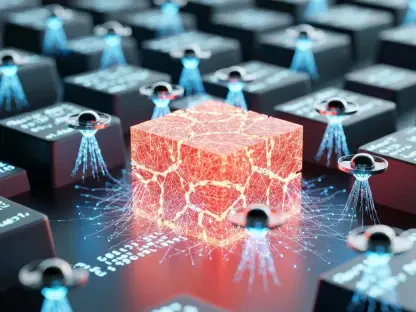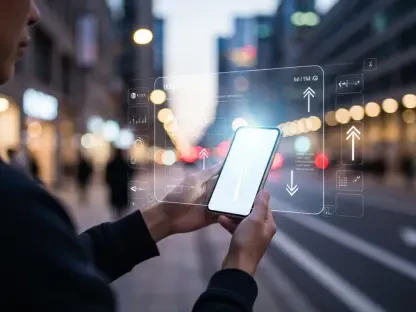Samsung hosted the Galaxy Tech Forum on January 23, 2025, in San Jose, California, where they delved into the transformative potential of AI across various sectors. One of the standout sessions, “Understanding Home, Understanding You: Rethinking the Role of the Home in the Era of AI,” shed light on Samsung’s revolutionary approach towards smart homes through intelligent AI integration.
The Evolution of User Interface in Home AI
Simplifying Interactions
Patrick Chomet, the Mobile Strategy Advisor at Samsung Electronics, emphasized the significance of user interface (UI) in the Home AI experience. UI acts as the conduit between users and household devices, such as mobile phones, TVs, and appliances, making it a crucial element for seamless interactions. With the advent of LLM multimodal AI, the UI has evolved to facilitate more natural and simplified interactions through gestures, voice, or text. This marks a significant leap forward from traditional UIs, which often required users to adapt to the device’s interface. Now, the devices are designed to understand and respond to the user’s intentions and context, creating a more immersive and intuitive experience.
Instead of users adapting to the devices, the devices are now designed to comprehend the users’ intentions. This evolution in UI functionality reduces the complexity that users typically face when interacting with smart devices. The sophisticated machine learning algorithms can now analyze context, gestures, and voice commands, enabling devices to better anticipate user needs and actions. Patrick Chomet highlighted that this seamless interaction not only enhances user experience but also opens up new possibilities for brands to offer tailored in-home solutions. By recognizing the nuances in user behavior and preferences, devices can now proactively offer suggestions and solve problems before users are even aware of them, thereby elevating the home automation experience to unprecedented levels.
Enhancing User Experience
The shift in UI has led to more connected and contextually aware smart homes, which can adjust settings and perform tasks without explicit user commands. This dynamic adaptation ensures that the user remains at the forefront of the experience, with AI facilitating hassle-free operations. The significance of this approach lies in its ability to blend technological sophistication with user-friendliness, making smart homes more accessible to a broader audience. Patrick Chomet pointed out that this enhancement is not just about convenience but also about creating environments that resonate with individual lifestyles and preferences.
Furthermore, the enhanced UI allows for better integration of various devices, ensuring they work in harmony to deliver a coherent and consistent user experience. For example, when the user arrives home and opens the door, the system, understanding the context, could automatically adjust lighting, temperature, and even begin playing a desired playlist. This seamless integration of devices powered by an intelligent UI transforms everyday routines, making them more efficient and enjoyable. By optimizing in-home solutions with AI, Samsung is not only enhancing convenience but also opening up new opportunities for personalized interactions and experiences that are tailored to individual needs.
SmartThings and Intuitive UI
Advanced Functionalities
Jaeyeon Jung, Samsung’s Executive Vice President and Head of the SmartThings Team, illustrated how SmartThings incorporates an intuitive UI across its array of features. She elaborated on how functionalities such as Quick Remote and 3D Map View have made managing smart homes more user-friendly. Quick Remote allows users to control their TVs with connected Galaxy smartphones, presenting a more convenient and unified interface for device management. The 3D Map View takes this a step further by providing a virtual representation of the home, enabling users to manage and monitor their entire home setup, including energy consumption, via their smartphones and tablets.
These advancements show that Samsung is committed to creating smarter homes that cater to the varied needs and preferences of their users. Quick Remote and 3D Map View enable users to manage their smart homes with ease, making the technology more approachable. The introduction of these advanced features illustrates the potential of AI to revolutionize the smart home experience, offering enhanced control and visibility over home environments. Users can now have a bird’s eye view of their home, monitor energy usage, and make real-time adjustments from the convenience of their smartphones or tablets, highlighting the depth and scope of SmartThings’ transformative capabilities.
Personalized Home Insights
Alongside these advanced functionalities, the Home Insight feature provides timely home reports and personalized recommendations. This functionality underscores the ability of SmartThings to anticipate user needs and optimize home environments accordingly. By analyzing user behavior and preferences, Home Insight can generate reports that highlight areas where energy consumption can be reduced or suggest improvements to enhance comfort and efficiency. Such personalized recommendations offer users valuable insights into their daily routines, enabling smarter decisions that promote sustainability and convenience.
The Home Insight feature also exemplifies how AI can transform data into actionable intelligence, offering users a more personalized and proactive approach to home management. It leverages advanced algorithms to analyze patterns, predict needs, and provide tailored solutions, ensuring that the smart home evolves in tune with the user’s lifestyle. For instance, if the system detects a pattern of lowering the thermostat every evening, it might suggest an automated setting to ensure the home is comfortably warm upon arrival. This personalized interaction demonstrates the potential of AI to make smart home experiences more responsive and engaging.
The Role of Platforms and Standardization
Integrated AI Platforms
Carolina Milanesi, CEO and founder of Heart of Tech, steered the conversation towards the need for integrated AI platforms and steadfast industry standards. The integration of AI across platforms is pivotal to unlocking a truly connected experience. Patrick Chomet reiterated that scaling AI platforms to encompass applications, services, and multiple devices optimizes the user experience by gathering richer insights and user context. This comprehensive understanding allows for more personalized interactions, making homes not only smarter but also more attuned to the specific needs and preferences of individuals.
Patrick Chomet highlighted how AI platforms can harmonize multiple devices and services, offering a cohesive and integrated user experience. This entails a significant shift from isolated smart gadgets to a network of interconnected devices that operate in concert to enhance convenience and satisfaction. By leveraging integrated AI platforms, Samsung can create an ecosystem where devices communicate with each other, seamlessly adjusting to deliver optimum performance. This holistic approach ensures that every aspect of the home environment is synchronized to the user’s lifestyle, further enhancing the smart home experience and setting a new standard for home automation.
The Importance of Standards
Tobin Richardson, President and CEO of the Connectivity Standards Alliance (CSA), emphasized the necessity of industry standards to foster an ecosystem where devices can connect securely and seamlessly. The establishment of common standards ensures that devices from different manufacturers can work together, thus promoting interoperability and enhancing the overall user experience. Richardson underscored that AI’s success in the smart home environment hinges on seamless connectivity and device interoperability, which can only be achieved through unified industry standards.
Matter, described as a common language for devices, facilitates effortless communication between different smart home products, making integration smoother and more reliable. Richardson commended Samsung’s contributions in this sphere, recognizing their efforts to adapt technology to user needs and create more personalized living experiences. The establishment of such standards is instrumental in building trust among consumers, ensuring that their smart home devices not only function well together but also adhere to stringent security protocols. This unified approach is crucial for driving the widespread adoption of smart home technologies and fostering a more cohesive and user-friendly ecosystem.
Practical Applications and Security
Hyper-Personalized Health Experiences
Practical examples were shared by Jaeyeon Jung on how Samsung Health and SmartThings collaborate to provide hyper-personalized health experiences. For instance, these technologies can adjust sleep environments by modifying temperature and humidity based on user sleep patterns and existing environmental conditions. Such adaptive measures ensure that users enjoy a restful sleep tailored to their preferences and needs. Additionally, Galaxy devices can detect post-exercise activity and subsequently prompt SmartThings to activate home appliances such as air conditioners and washing machines. This synchrony between health monitoring and home management creates a more convenient and responsive living environment.
This collaboration between Samsung Health and SmartThings exemplifies the potential of AI to deliver personalized and proactive solutions that cater to individual lifestyles. By leveraging health data, these technologies can create environments that support wellness and fitness goals. For example, after a strenuous workout, SmartThings might activate the air conditioner to provide a cool environment, offering immediate comfort. This hyper-personalized approach demonstrates how AI can enhance daily living by integrating health insights with smart home functionalities, paving the way for more intuitive and adaptive home ecosystems.
Ensuring Security
On January 23, 2025, Samsung held the Galaxy Tech Forum in San Jose, California. The event explored the vast capabilities of artificial intelligence in different industries. One of the highlights of the forum was a session titled “Understanding Home, Understanding You: Rethinking the Role of the Home in the Era of AI.” This session focused on Samsung’s innovative vision for smart homes, emphasizing how advanced AI technology could redefine and enhance our living spaces. Samsung’s approach centers on creating intelligent homes that adapt to the needs and behaviors of their inhabitants through seamless AI integration. The discussion underscored the transformative effect AI could have in making homes more intuitive and responsive, reinforcing Samsung’s commitment to pushing the boundaries of technology to improve daily life. The forum not only showcased Samsung’s advancements but also highlighted the broader implications of AI in connecting and improving various aspects of our lives. Through their forward-thinking strategies, Samsung aims to lead the revolution in making the concept of smart homes a reality.









